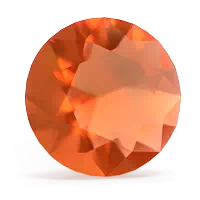

The celtic knot is an ancient symbol of the journey of life. With no beginning and no end, the knot represents the timeless nature of our spirits and the world we live in. A Fire Opal celtic knot combines these concepts with the spiritual attributes of the Fire Opal . This birthstone of October embodies the orange and red colors of a warming fire. The fiery sparkle of this gem makes a fire opal ring become the center of conversation The birthstone of December, the intense deep blue color of a london blue topaz ring can evoke thoughts of warm Caribbean nights.